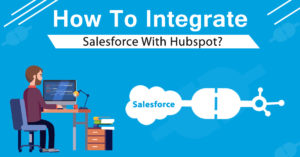
Salesforce leaves no stone unturned to provide every possible facility to its users, admins, developers etc. One such effort in this regard is the development of Salesforce Workbench a versatile API toolkit designed to sync the workflows between Salesforce.org and the Force.com APIs. Today we will see how you can work in a smarter way with Salesforce Workbench.
For this, we have divided the blog into the following sections-

Salesforce Workbench is a flexible, cloud-facilitated toolbox intended for Salesforce admins and designers to administrate and work with Salesforce.com association by means of Force.com APIs. Utilizing Salesforce Workbench suite of instruments, developers and architects can quickly and effortlessly perform SOQL Query and SOSL looks, see their association’s information, adjust session settings, perform Data Loading, lead testing, organization, and troubleshooting of their applications.
You can utilize the Workbench apparatus to get data about your association. In the event that you would prefer not to utilize CURL, you can utilize the Workbench REST adventurer to acquire the response data that you need.
https://developer.salesforce.com/page/Workbench.
Note: Salesforce Workbench is a public domain website and it won’t retain any of your data.
| 1 | https://yourInstance.salesforce.com/services/data/v32.0/sobjects/EventLogFile/describe -H “Authorization: Bearer token” |
| 1 | /services/data/v32.0/sobjects/EventLogFile/describe. |
Salesforce Workbench is one of most basic instruments with copious highlights that come as a gift for the administrators and engineers! It enables you to rapidly see your association’s information, perform SOQL Query, SOSL Search, Session settings, test, convey, investigate applications and much more. In spite of the fact that the functionalities of Salesforce can be completed with Salesforce Admin UI, Developer Console, Force.com IDE, and others, the significant distinction and preferred standpoint are that Salesforce Workbench makes it simple to get to all functionalities in a single place.
Here are a few features of the Salesforce Workbench that can help you work in a smarter way-
Salesforce Workbench enables you to play out this through its Blacklist and Whitelist highlights. For this, you have to discover the “Organization ID WHITELIST/BLACKLIST” segment in your config/overrides.php record and adhere to the guidelines with the end goal to include or evacuate Orgs.
CSRF or Cross-Site Request Forgery is finished by programmers to trap the clients into embeddings or controlling information for their benefit through a confided website of the client. To defend your information against these assaults, CSRF insurance is incorporated into your Salesforce Workbench, which depends on a “secret” put away on your Salesforce Workbench condition. We unequivocally prescribe that you change the default secret to something that can be secretly ensured. For this, you have to go into the config/overrides.php record, discover “CSRF SECURITY SETTINGS” area and after that change, the default “CHANGE ME” and afterward uncomment the line by evacuating twofold oblique punctuation lines.
With Salesforce Workbench, you can transfer a Zip document to embed, refresh, upsert or erase parallel documents like Content, Documents, and Attachments. For utilizing this element, you have to set up a Zip document containing parallel records and a CSV filed called the request.txt.
Delete functionality of Workbench moves records to your Organization’s reuse container and can be undeleted if the object has an undeletable quality. Purge option, however, erases things forever in the Organization’s reuse container. In any case, a few sorts of items are erased promptly from your organization when they are erased. You have to ensure that the record has the undeletable property before erasing records. You can check this utilizing the Describe features which contains the Attributes envelope of each object.
Salesforce Workbench enables you to see and alter single records just by tapping on their ID in search results or query items. Also, on the off chance that you know the ID already or it originated from outside the Workbench condition, you can straightforwardly go to the activity you have to perform on the Data menu and glue in the ID into the single record field.
Salesforce Workbench enables you to avoid the Recycle Bin and forever hard delete records from Salesforce Org. For this, you have to erase the records of course, apart from that just check the checkbox marked against the option of ” Permanently hard delete records ” in the wizard.
Salesforce Workbench utilizes HTTPS (SSL) as a matter, of course, to associate with Salesforce. Nonetheless, it is your server setup that decides the association between your PC and Salesforce Workbench condition. To empower Salesforce Workbench to authorize end-to-end SSL, add the line beneath to config/overrides.php document
$config\[“requireSSL”\]\[“default”\]=true;
When utilizing Insert, Update, or Upsert, Smart Lookup enables you to give remote outer IDs or standard ID query fields to naturally locate the pertinent Salesforce IDs through the related object fields.
Conclusion
Well, we are sure that after reading the above highlights, you would have already started brainstorming about the things you wish to do with the Workbench toolkit. The best part is that it’s as easy as it sounds. All you need to do is follow the intuitive steps that appear within the toolkit itself and gain a little awareness of its core features. And if at any point you need expert guidance or want to streamline your implementation, you can always consult a certified Salesforce consultant to ensure you’re using Workbench to its full potential and following best practices.
Stop, read and acquire deep insights into complex issues
© 2025 Copyright - JanBask.com | Designed by - JanBask Digital Design
Write a Comment